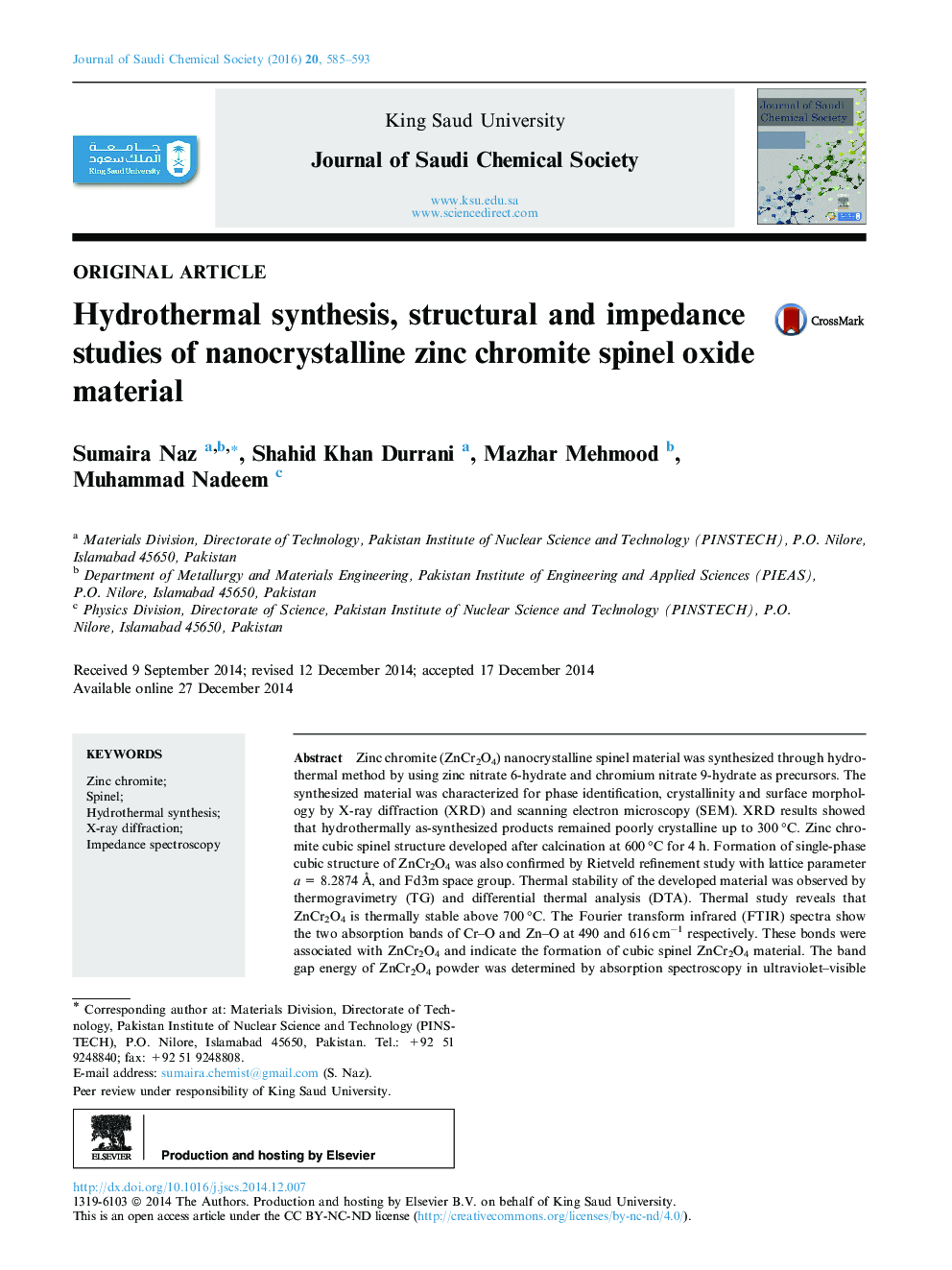| کد مقاله | کد نشریه | سال انتشار | مقاله انگلیسی | نسخه تمام متن |
|---|---|---|---|---|
| 4909463 | 1362622 | 2016 | 9 صفحه PDF | دانلود رایگان |
Zinc chromite (ZnCr2O4) nanocrystalline spinel material was synthesized through hydrothermal method by using zinc nitrate 6-hydrate and chromium nitrate 9-hydrate as precursors. The synthesized material was characterized for phase identification, crystallinity and surface morphology by X-ray diffraction (XRD) and scanning electron microscopy (SEM). XRD results showed that hydrothermally as-synthesized products remained poorly crystalline up to 300 °C. Zinc chromite cubic spinel structure developed after calcination at 600 °C for 4 h. Formation of single-phase cubic structure of ZnCr2O4 was also confirmed by Rietveld refinement study with lattice parameter a = 8.2874 à , and Fd3m space group. Thermal stability of the developed material was observed by thermogravimetry (TG) and differential thermal analysis (DTA). Thermal study reveals that ZnCr2O4 is thermally stable above 700 °C. The Fourier transform infrared (FTIR) spectra show the two absorption bands of Cr-O and Zn-O at 490 and 616 cmâ1 respectively. These bonds were associated with ZnCr2O4 and indicate the formation of cubic spinel ZnCr2O4 material. The band gap energy of ZnCr2O4 powder was determined by absorption spectroscopy in ultraviolet-visible range and was found to be 3.771 eV and 3.147 eV for direct and indirect band gap respectively. SEM images show well-faceted crystals of ZnCr2O4, with the grain size of 50-80 nm. An equivalent circuit model (R1Q1)(R2Q2)(R3Q3) was employed to explain three relaxation processes associated with bulk and grain boundaries in ZnCr2O4 nanoparticles, and electrodes. Conductivity of the nanoparticles increased with frequency, and dielectric constant of the material showed dispersion at comparatively lower frequencies. At higher frequencies, the dielectric constant remained independent of frequency as attributable to the atomic and electronic polarizations.
Journal: Journal of Saudi Chemical Society - Volume 20, Issue 5, September 2016, Pages 585-593
